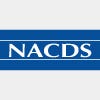By: Steven C. Anderson, IOM, CAE, President and CEO, National Association of Chain Drug Stores
The 300,000+ influential readers of Harvard Business Review are seeing pharmacists positioned as part of the solution to high-quality and affordable healthcare.
An article in the January-February 2020 edition, “Managing the Most Expensive Patients: A New Primary-Care Model Can Lower Costs and Improve Outcomes,” describes important findings of Kaiser Permanente.
Among the findings:
Added recently to the model, pharmacists can access laboratory data and, using protocols created by the physicians, make many of the medication changes needed, saving doctors even more time.
The new model enables each physician to economically provide continual care for about 1,800 patients — 30% of whom have one or more chronic diseases — that’s of much higher quality than conventional primary care. The doctor knows exactly what the medical assistant is doing, the specific drugs the pharmacist is titrating (fine-tuning the dosage of), and the preventive services the IT voice and text systems will encourage.
If anything, pharmacists’ extensive education empowers them to do even more than is contemplated in this article. NACDS has submitted formal comments to federal agencies that substantiate the even greater role that pharmacies and pharmacists can fulfill in coordinating and managing care for patients and in delivering preventive care.
NACDS is waging vigorous campaigns to break down the needless barriers that stand in the way of pharmacy patient care.
· It is critical to empower pharmacists to practice to the height of their education by changing policies at the federal and state levels.
· It is critical that pharmacies can optimize their care models by hiring more pharmacy technicians, and that pharmacy technicians can perform a broader array of appropriate functions.
· It is critical that pharmacies are reimbursed fairly, to prevent pharmacy closures that diminish patients’ access to care.
On the topic of pharmacy technicians, it should be lost on nobody that the Harvard Business Review article also emphasizes the role of physician assistants, whose functions free up physicians to engage in more clinical patient care. This supports our case that pharmacy technicians need to be empowered through policy changes to help free up pharmacists’ time. For no good reason, barriers to the use of technicians in the pharmacy setting are far more oppressive than barriers to the use of technicians in other professional settings.
Governments, employers and plans should see in this Harvard Business Review article — and in the growing body of evidence — that pharmacists and pharmacies are essential for health and wellness and for the successful delivery of high-quality, accessible and affordable care. The time for action is now.
